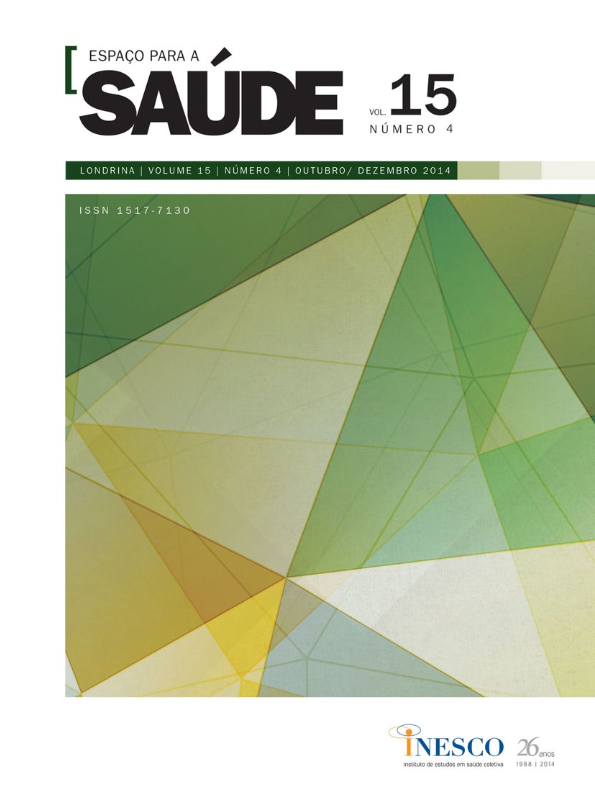CARACTERÍSTICAS E DEFICIÊNCIAS FÍSICAS DE VÍTIMAS DE ACIDENTES DE TRÂNSITO ATENDIDAS NO SERVIÇO DE REFERÊNCIA PARA REABILITAÇÃO DO ESTADO DE MATO GROSSO, BRASIL, 2010
DOI:
https://doi.org/10.22421/15177130-2014v15n4p22Keywords:
Acidentes de trânsito, avaliação da deficiência, Classificação Internacional de Funcionalidade, Incapacidade e Saúde, Classificação Internacional de Doenças, morbidadeAbstract
OBJETIVO: Caracterizar as vítimas de acidentes de trânsito e as deficiências físicas deles decorrentes. MÉTODO: Estudo transversal da demanda do serviço estadual de referência para reabilitação de Mato Grosso, entre abril e julho de 2010. As lesões e circunstâncias dos acidentes foram codificadas segundo a Classificação Internacional de Doenças (CID-10), as deficiências segundo a Classificação Internacional de Funcionalidade, Incapacidade e Saúde (CIF). RESULTADOS: Foram estudados 69 indivíduos; com idade média de 31,7 anos e predomínio do sexo masculino (65,2%), motociclistas (71,1%), fraturas (72,5%) e lesões acometendo membros inferiores (44,3%). As deficiências de estrutura estavam relacionadas ao movimento (92,4%); as de função corpórea à força muscular (92,8%) e mobilidade articular (91,3%). CONCLUSÃO: As vítimas em reabilitação têm perfil distinto daquele das vítimas fatais ou que foram hospitalizadas. O estudo da deficiência física acrescenta informações relevantes à caracterização de vítimas de acidentes de trânsito permitindo o aprimoramento da vigilância desses agravos.
Downloads
Published
How to Cite
Issue
Section
License
Copyright (c) 2014 Espaço para a Saúde

This work is licensed under a Creative Commons Attribution 4.0 International License.
Authors who publish in this journal agree to the following terms:
- Authors grant the journal the copyright, with the work simultaneously licensed with Creative Commons CC BY, which allows the sharing of work with recognition of authorship and initial publication in this journal.
- Authors are authorized to assume additional contracts separately, for non-exclusive distribution of the version of the work published in this journal (e.g., to publish in an institutional repository or as a book chapter), with authorship recognition and initial publication in this journal.
- Authors are permitted and encouraged to publish and distribute their work online (e.g., in institutional repositories or on their personal page) at any point before or during the editorial process, as this can generate productive changes, as well as increase the impact and the citation of the published work (See The Effect of Free Access).






